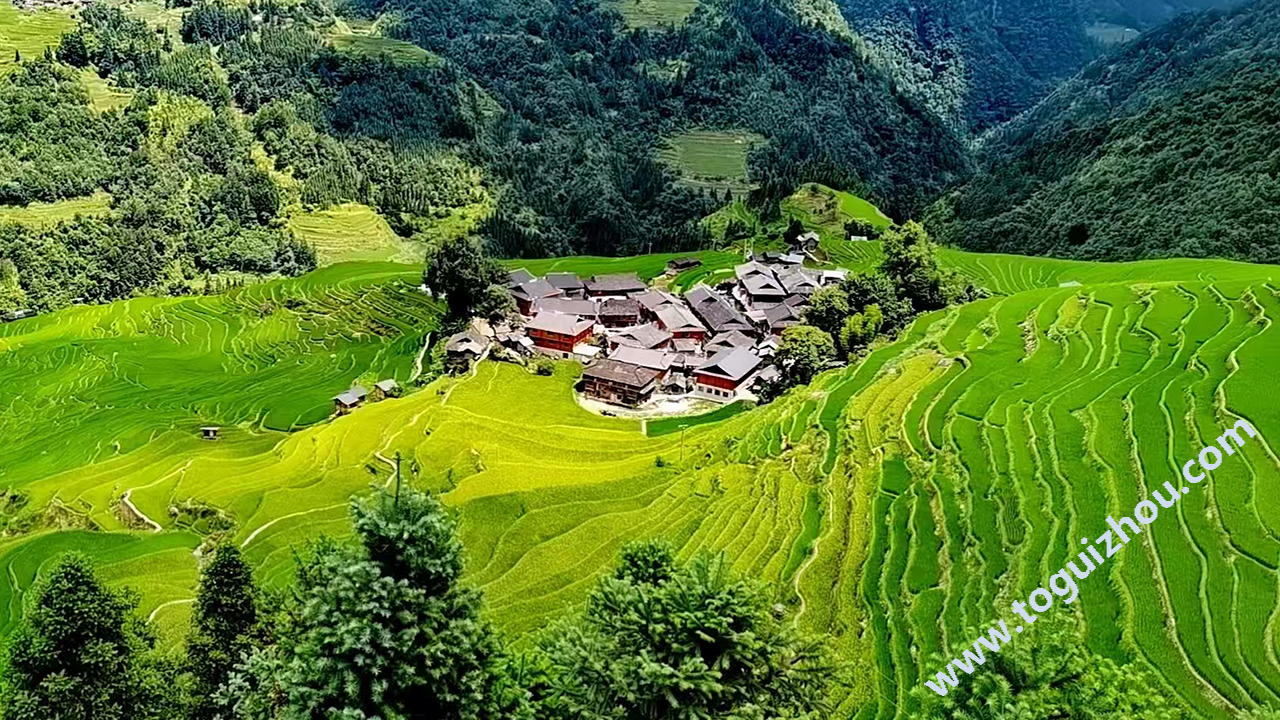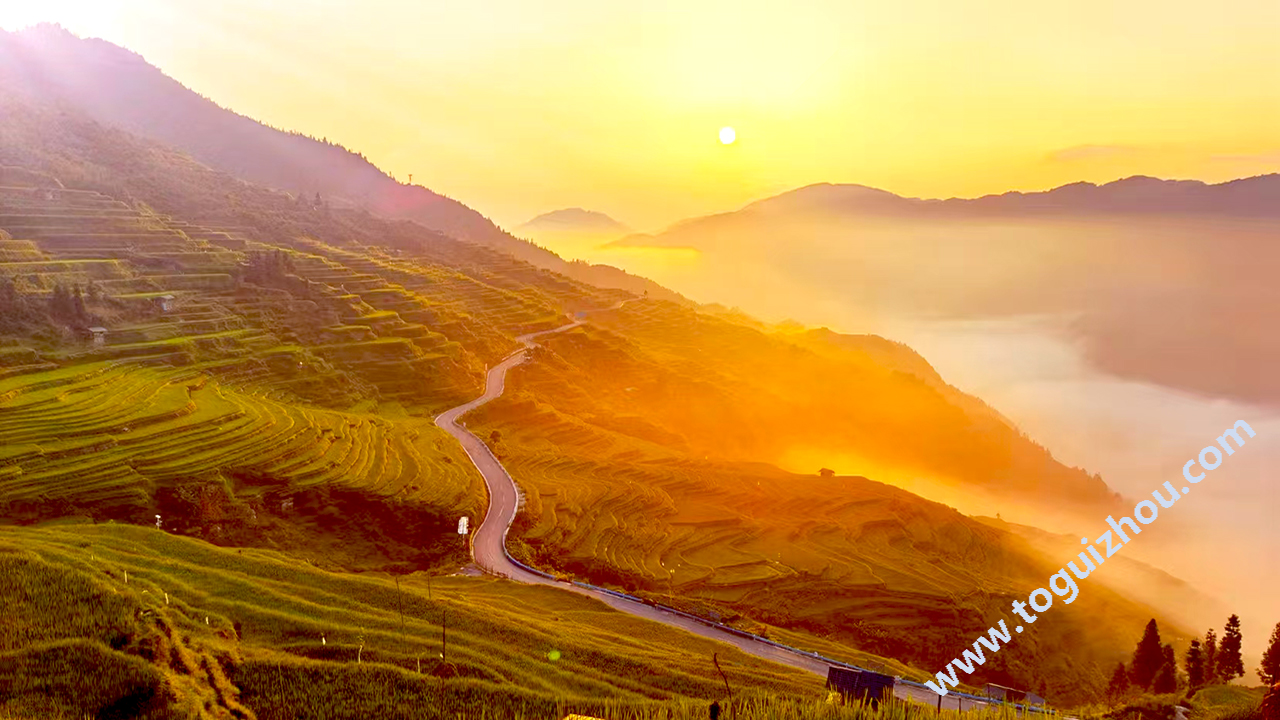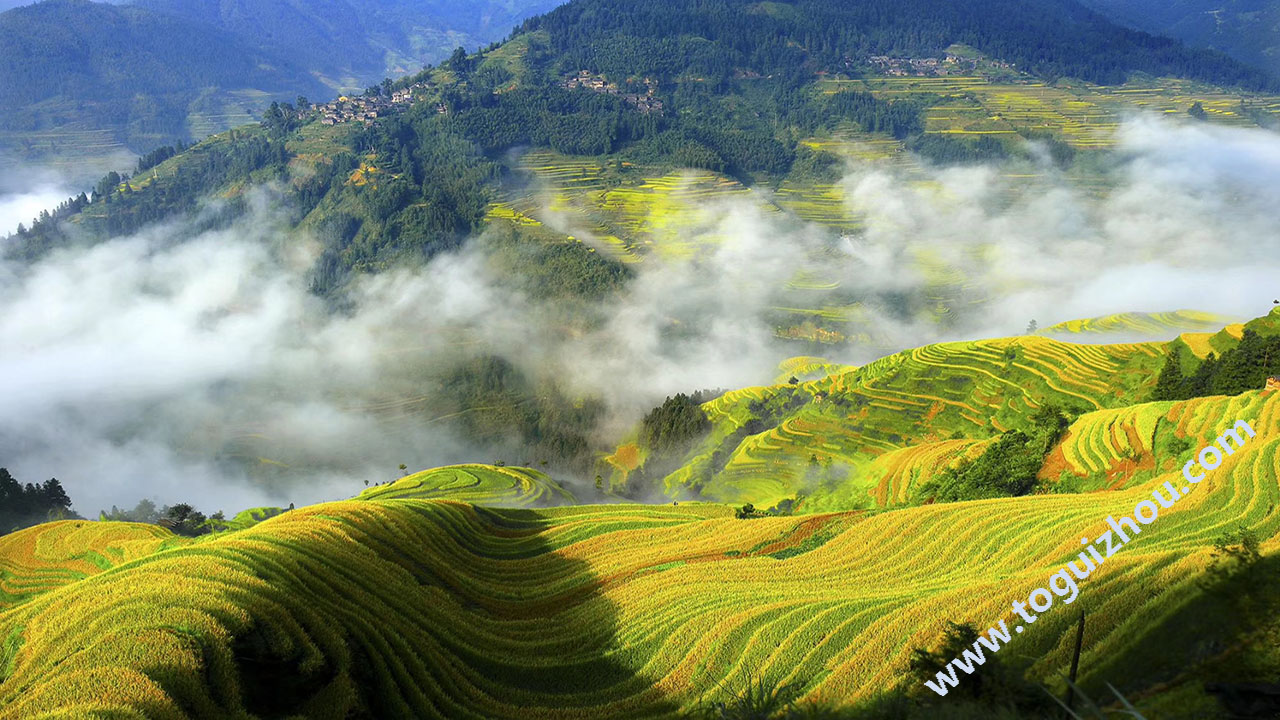Jiabang Terraces in Congjiang: A Marvel of Nature and Human Ingenuity
Jiabang Terraces, located in Congjiang County, Guizhou Province, China, are a breathtaking sight that showcases the harmonious blend of nature and human labor. This remarkable agricultural landscape has been shaped over centuries and holds great cultural and ecological significance.
They stretch more than 15 km along the road until the valley. And there are many authentic Miao villages scattered along the road as well. The local villagers start planting rice from mid April and harvest the rice in early October. Therefore you can enjoy the scenery for more than half a year and see different sceneries in different months. I would highly recommend Jiabang terraced fields to visitors who are interested in rice terraces scenery and ethnic tribes.
1. Geographical Location and Natural Setting
Situated in the mountainous region of southeastern Guizhou, the Jiabang Terraces are nestled among lofty mountains. The area is characterized by a subtropical monsoon climate, with abundant rainfall and distinct seasons. The warm and humid climate, combined with the fertile soil of the mountain slopes, provides an ideal environment for rice cultivation. The terraces are fed by a natural water system, with springs and streams cascading down the mountains, ensuring a continuous supply of water for the rice fields throughout the growing season.
2. Historical and Cultural Significance
The construction of the Jiabang Terraces dates back hundreds of years, a testament to the wisdom and perseverance of the local ethnic groups, mainly the Dong people. These terraces were not only a means of survival but also a form of cultural expression. The Dong people, with their deep - rooted connection to the land, developed a unique agricultural system that allowed them to thrive in the mountainous terrain. The terraces are an integral part of their cultural heritage, passed down through generations. They are also associated with a rich tapestry of traditional festivals, songs, and dances that celebrate the cycle of the rice harvest. For example, during the harvest season, the Dong people hold grand festivals where they express their gratitude to nature and the spirits of the land.
3. Agricultural Ingenuity and Sustainable Practices
The layout and construction of the Jiabang Terraces are a marvel of agricultural engineering. The terraces are built in a stepped - like pattern along the mountainsides, effectively preventing soil erosion and maximizing the use of limited land. Each terrace is carefully leveled and irrigated, with a complex network of channels and ditches that distribute water evenly. The local farmers use traditional farming methods, such as organic fertilizers and natural pest control, which not only ensure the quality of the rice but also maintain the ecological balance of the area. The rice grown in these terraces is not only a staple food but also a source of income for the local communities.
4. Scenic Beauty and Tourism Appeal
The Jiabang Terraces are a visual masterpiece. In spring, the terraces are filled with water, reflecting the blue sky and white clouds, creating a mirror - like landscape. As the rice grows in summer, the terraces turn into a lush green expanse. In autumn, during the harvest season, the golden - yellow rice fields add a warm and vibrant color to the mountains. This ever - changing scenery attracts tourists from all over the world. Tourism has brought new opportunities for the local communities, with the development of homestays and local handicraft sales. However, efforts are also being made to ensure that tourism is sustainable, so as to protect the unique cultural and natural environment of the Jiabang Terraces.






